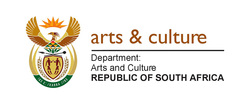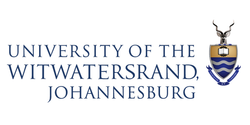Partners
Department of Arts and Culture
"Laying the foundation for greatness".

The Department of Arts and Culture (DAC), South Africa contributes significantly to social cohesion, nation building and economic empowerment increasing the contribution of the sector to job creation, skills development, entrepreurship and inclusive growth. The DAC ensures a supportive and enabling environment for the growth and development of the sector by developing, preserving and promoting South African arts, culture and heritage; providing access to information by citizens and public institutions to accurate, reliable and timely information in the language of their choice; promoting official languages of South Africa and enhancing the linguistic diversity of the country in a manner that facilitates equitable cultural expression by citizens and communities; and facilitating social cohesion and inclusivity resulting in enhanced national identity, pride and participation in civic life by citizens and communities.
The Cradle of Humankind World Heritage Site and Maropeng

The Cradle of Humankind was declared a World Heritage Site by the United Nations Educational, Scientific and Cultural Organization (UNESCO) on 2 December 1999. Boosting some 50 000 hectares, the Cradle boasts around 15 fossil sites which are indeed sites of outstanding universal value because of the wealth of significant hominin fossils that have been unearthed at these sites including Mrs Ples, Little Foot, Taung Child skull and the recently described Australopithecus sediba, revealed to the world in April 2010. This fossil has been dated at an astoundingly precise 1.97 million years before present and therefore offers an incredible window into our distant past and how we have evolved as a species. The sites of Malapa and the newly excavated Rising Star site, together with the world famous Sterkfontein Caves, have yielded the richest early human ancestor sites on the planet. Work on Australopithecus sediba alone has been featured in a large number of prestigious scientific works as well as the popular media including National Geographic, Scientific American, Time and many other media outlets. The Malapa site still holds precious fossil material and excavations are likely to continue at this site for decades to come. The site is also situated in one of the more pristine areas in the Cradle of Humankind World Heritage Site (COH WHS).
The COH WHS boasts world-class visitor orientation centres in the Maropeng which means ‘returning to the place from where we come’ in Setswana (an indigenous African language) and the world-famous Sterkfontein Caves, which continues to attract hordes of visitors from across the globe. Maropeng is a “Fair Trade Tourism” member endorsed and ‘Proudly South African’ registered venue, comprising a four-star boutique hotel, conference facilities, an extensive underground visitor centre depicting the path of humankind from its origins to modern Homo sapiens as well as a variety of restaurants. Maropeng was created through a public-private partnership between the Gauteng Provincial Government and the University of the Witwatersrand. Treasures from the collections of the Evolutionary Studies Institute at Wits University and other institutions are often on display at Maropeng’s Visitor Centre exhibition and highlight the special relationship between Maropeng and Wits University.
The COH WHS boasts world-class visitor orientation centres in the Maropeng which means ‘returning to the place from where we come’ in Setswana (an indigenous African language) and the world-famous Sterkfontein Caves, which continues to attract hordes of visitors from across the globe. Maropeng is a “Fair Trade Tourism” member endorsed and ‘Proudly South African’ registered venue, comprising a four-star boutique hotel, conference facilities, an extensive underground visitor centre depicting the path of humankind from its origins to modern Homo sapiens as well as a variety of restaurants. Maropeng was created through a public-private partnership between the Gauteng Provincial Government and the University of the Witwatersrand. Treasures from the collections of the Evolutionary Studies Institute at Wits University and other institutions are often on display at Maropeng’s Visitor Centre exhibition and highlight the special relationship between Maropeng and Wits University.
University of the Witwatersrand, Johannesburg

Wits University is a research-intensive university, one of the leading institutions on the African continent that produces world-class research that transforms lives and society in multiple ways. Wits offers a free space for the exchange of ideas, a platform for opposing voices to find common ground, and a vibrant intellectual community that fosters debate and knowledge transfer both in and beyond our lecture halls.
More than 85% of its research is published in international journals, with Wits publishing more papers in leading journals, such as Science and Nature, than any other African university. It is a global leader in palaeosciences-related research and is renowned for its research in HIV/Aids; finding solutions to deep level mining problems; and its researchers are working with the best in the world to change society for the better. Wits has doubled its research output in recent years, with a 32% increase since 2012.
More than 85% of its research is published in international journals, with Wits publishing more papers in leading journals, such as Science and Nature, than any other African university. It is a global leader in palaeosciences-related research and is renowned for its research in HIV/Aids; finding solutions to deep level mining problems; and its researchers are working with the best in the world to change society for the better. Wits has doubled its research output in recent years, with a 32% increase since 2012.
National Geographic

National Geographic is a global nonprofit membership organization driven by a passionate belief in the power of science, exploration and storytelling to change the world. Each year, it funds hundreds of research, conservation and education programs around the globe. Every month, it reaches more than 700 million people through its media platforms, products and events. National Geographic’s work to inspire, illuminate and teach through scientific expeditions, award-winning journalism and education initiatives is supported through donations, purchases and memberships. For more information, visit www.nationalgeographic.com.




